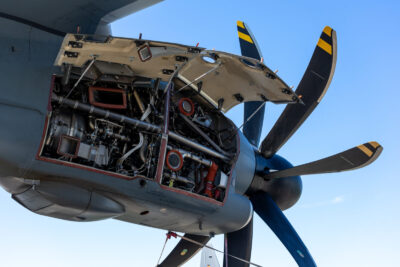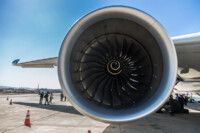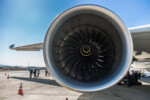The 5 Different Types of Aircraft Engines Explained
12 September 2022 | Updated on February 05, 2024
The history of powered flight is significant because men could take to the skies at will without being subject to the elements for the first time. Although balloons and airships were widespread by the turn of the 20th century. Engineers and inventors couldn’t build an engine allowing an aircraft to overcome the drag forces caused by gravity until 1903.
Soon after the Wright Brothers made the first powered flight with the Wright Flier, aircraft engines became bigger and more powerful as the demand for larger airplanes capable of flying longer distances grew. And by the end of the 20th century, aircraft engine production for military and commercial aviation was a billion-dollar industry.
Today, several companies like General Electric, Pratt & Whitney, and Roll Royce produce different types of aircraft engines. They employ thousands of individuals using hi-tech design and engineering techniques to build aircraft engines for different airplane types.
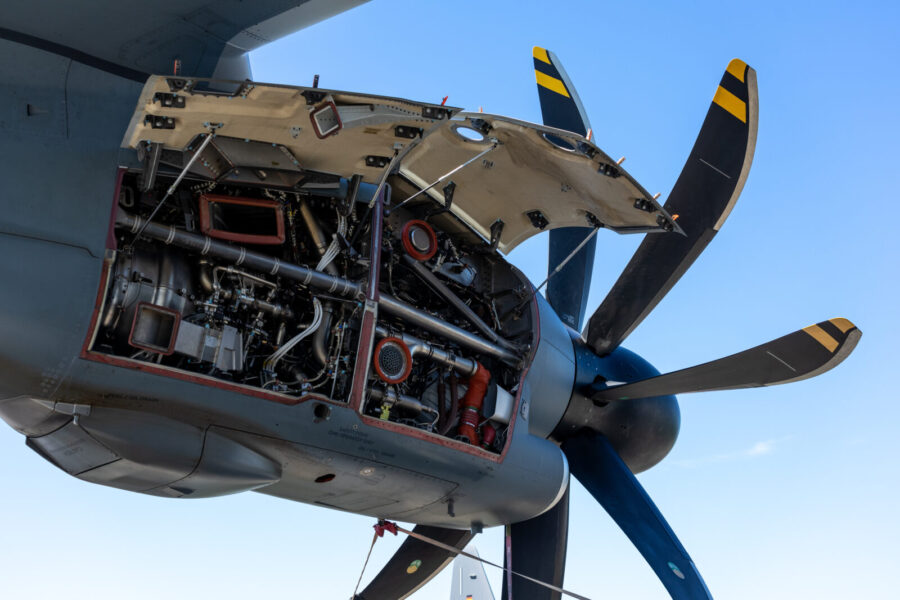
5 Types of Aircraft Engines
There are five different types of aircraft engines, and most of these engine types have different subclassifications. We will explain the different engine types and their benefits in this article.
1. Reciprocating Engine
Also known as a piston engine or internal combustion engine, it is a heat engine using fuel ignition created inside a single or multiple reciprocating pistons to produce high temperatures and high pressure, which generates rotating motion. Reciprocating aircraft engines run on high-octane gasoline, commonly called Aviation Gas AVGAS, and may be air or water-cooled. A reciprocating piston engine has a simple design, is inexpensive to build, has low operating costs, and is easy to maintain.
Reciprocating piston engines are common in general aviation aircraft, although their use has declined in recent years. Airplanes in the Light Sports and Experimental category often use reciprocating piston engines, and engineers typically categorize reciprocating aircraft engines by cylinder arrangement.

1.1 In-line engine
In-line engines are reciprocating engine configurations with a single row of cylinders operating a single crankshaft which can be located above (inverted in-line engine) or below the cylinder bank. These types are the earliest types of aircraft engines consisting of an even or uneven number of cylinders. However, the configuration has been abandoned in favor of more efficient engine designs. In-line engines may be air-cooled, but large in-line engines are typically water-cooled due to design issues that restrict airflow. An advantage of an in-line engine is that it allows for a lower and streamlined frontal area, reducing drag and providing better pilot visibility. Also, inverted in-line engines allow higher mounted propellers for better ground clearance and shorter landing gear.
1.2 V-type engine
V-type engines consist of a two-bank in-line cylinder arrangement tilted sixty to ninety degrees apart. The two-cylinder banks drive a common crankshaft and have a water cooling system. Advantages of the V-type engine configuration include a small frontal area and a higher power-to-weight ratio than an in-line engine configuration. Perhaps, one of the best examples of the V-type engine is the Rolls-Royce Merlin engine of the World War II fighter plane, the Supermarine Spitfire.
1.3 Radial engine
A radial engine is a reciprocating engine configuration that consists of single or multiple rows of cylinders arranged around a central crankcase. Radial engines have an odd number of cylinders to ensure smooth power delivery. Some radial engines, called double-row radials, have two rows of seven or nine cylinders installed ahead of each other around the crankcase.
A characteristic of radial engines is their favorable power-to-weight ratio. Additionally, radial engines have better cooling properties and run smoother than other in-line engine configurations.
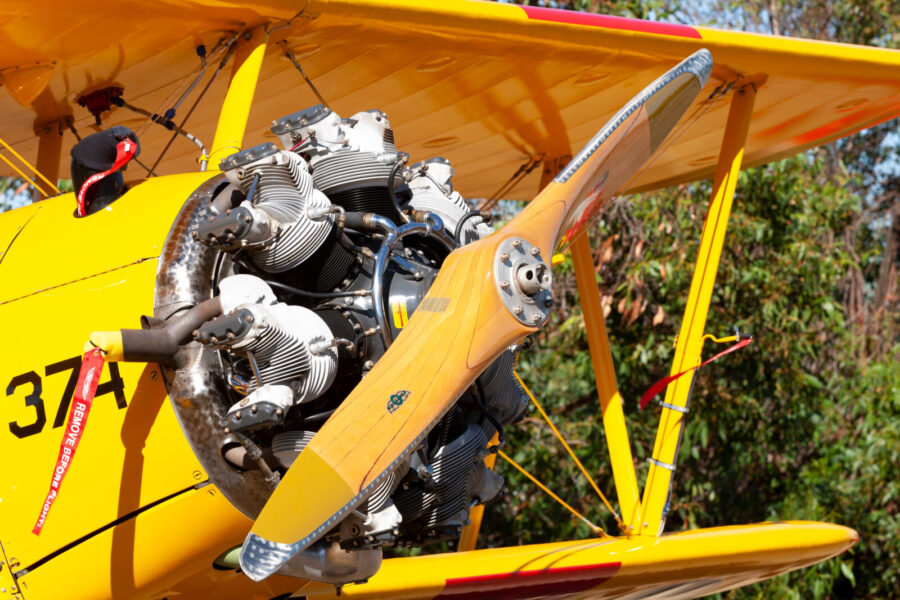

1.4 Horizontally opposed engine
The last type of reciprocating engines, the horizontally opposed engine, consists of two banks of an even number of cylinders placed opposite each other with a central crankcase connecting the two. This configuration has a horizontally mounted crankcase in airplane engines and a vertical crankcase in helicopter engines. Horizontally opposed engines are popular among general aviation aircraft with up to 400 horsepower (300kW), and they are predominantly air-cooled, although water-cooled versions exist. The advantages of horizontally opposed engines include a high power-to-weight ratio, a reduced frontal area that minimizes aerodynamic drag, and better pilot visibility.
2. Turboprop Engine
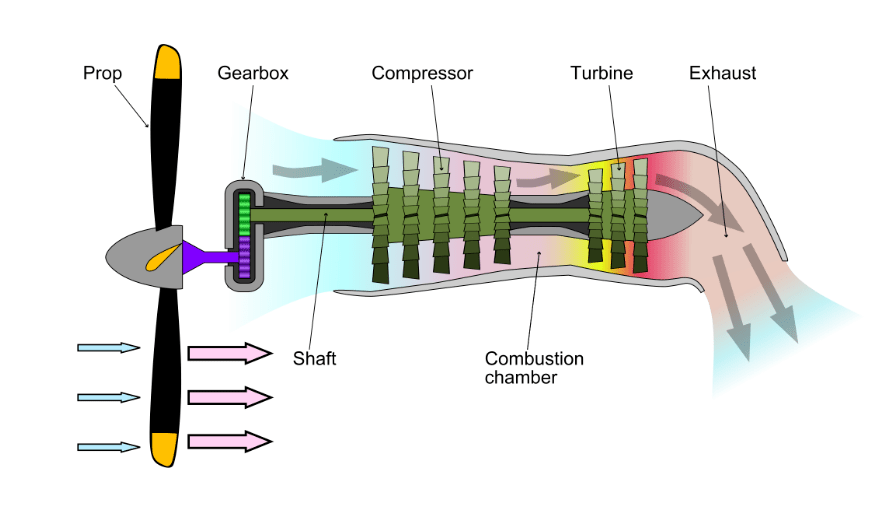

A turboprop engine is a type of aircraft engine offering the low maintenance and high speeds of a gas turbine engine with the reliability of a propeller drive system. Turboprops are power turbines, but unlike a jet turbine engine which provides thrust through the rearward discharge of hot exhaust gasses, a turboprop operates by turning a shaft connected to a turbine located aft of the combustion chamber and the propeller. A speed reduction gearbox between the engine and the propeller lowers the shaft’s speed, preventing the propeller from turning at supersonic speeds.
Turboprop engines share similar mechanical components with turbine jet engines, including a compressor, a combustion chamber, and a turbine. The mixture of air and gas inside the combustion chamber runs the turbine, which powers the compressor.
Turboprop engines are renowned for their low maintenance costs, stability at medium to high altitudes, and excellent fuel efficiency at low cruise speeds (below 500 mph) despite their high price. It is why most short-haul regional airliners and transport aircraft have turboprop engines.


3. Turboshaft Engine
Although a turboshaft engine shares its basic design with another power turbine, the turboprop is a type of aircraft engine that generates power to turn a turbine instead of producing thrust. Turboshaft engines are lightweight and powerful aircraft engines commonly used in real-world applications requiring fuel-efficient, robust, and compact powerplants like tanks, helicopters, hovercrafts, and auxiliary power units.
A turboshaft engine has two major component assemblies, namely, the ‘gas generator,’ which consists of the compressor, combustion chambers, ignitors, fuel nozzles, and a single or multiple turbine stages. The ‘power section’ assembly consists of the gear reduction system, additional turbine stages, and the shaft output. The turbines inside a turboshaft engine have no direct connection to the helicopter rotors. Instead, it operates on a “free turbine” principle, allowing the aircraft to take advantage of the power turbine’s optimum speed.
A turboshaft engine delivers power to the transmission via an output shaft. Typically bolted to the airframe, the transmission turns the rotors producing lift. An advantage of a turboshaft power turbine over a reciprocating piston engine is its compact size and high power-to-weight ratio. Also, changes in the turbine speed do not affect the airborne helicopter speed, which can remain constant regardless of the power output.


4. Turbojet Engine


A turbojet engine is a type of aircraft engine whose primary means of propulsion is the rearward discharge of hot exhaust gas. It is an airbreathing jet engine that works by sucking atmospheric air into a compressor. The compressed air is mixed with burning fuel in the combustion chamber, where it is heated and passes into the turbine. The hot turbine exhaust expands in the propelling rear-facing nozzles and is ejected into the atmosphere.
Turbojet engines consist of air-inlet with inlet guide vanes, a compressor, a combustion chamber, and a gas turbine driving the compressor. They are capable of high subsonic and supersonic speeds, thus their use in military aircraft and commercial airliners.
Turbojet’s high exhaust speeds and simple design make them excellent powerplants for medium-range cruise missiles. An example of an aircraft powered by a turbojet engine is the Soviet MiG-25 fighter jet. Unusual applications of this type of aircraft engine include world land-speed record attempts with vehicles.
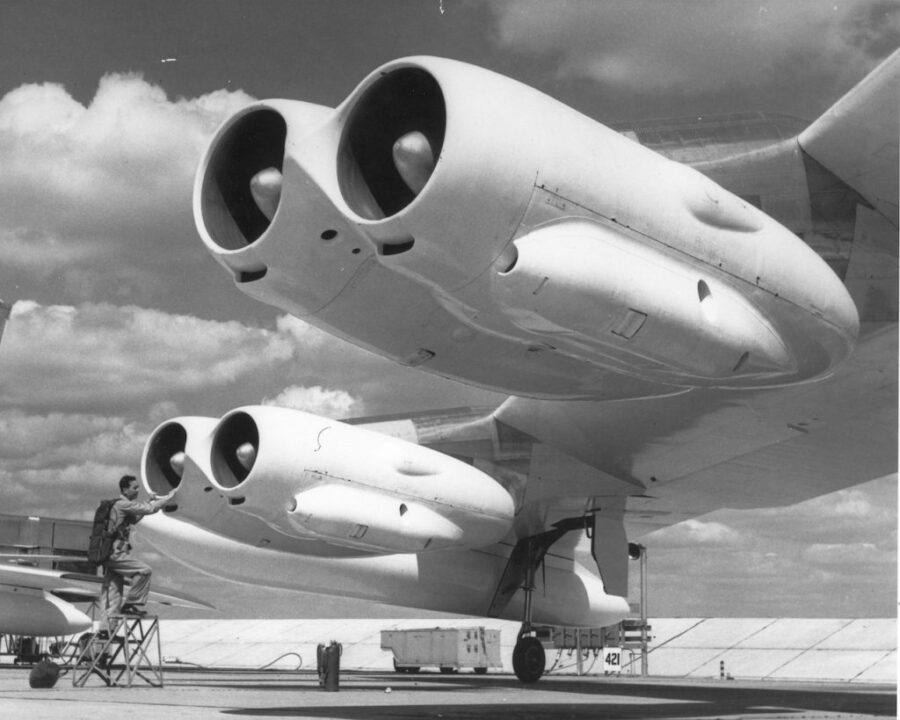

5. Turbofan Engine


Another air-breathing engine, the turbofan engine, is a type of aircraft engine commonly found on large commercial airliners. It works similarly to a turbojet engine but combines the thrust provided by the air from its enlarged ducted fan with hot exhaust gasses ejected by the rear nozzles to propel an aircraft.
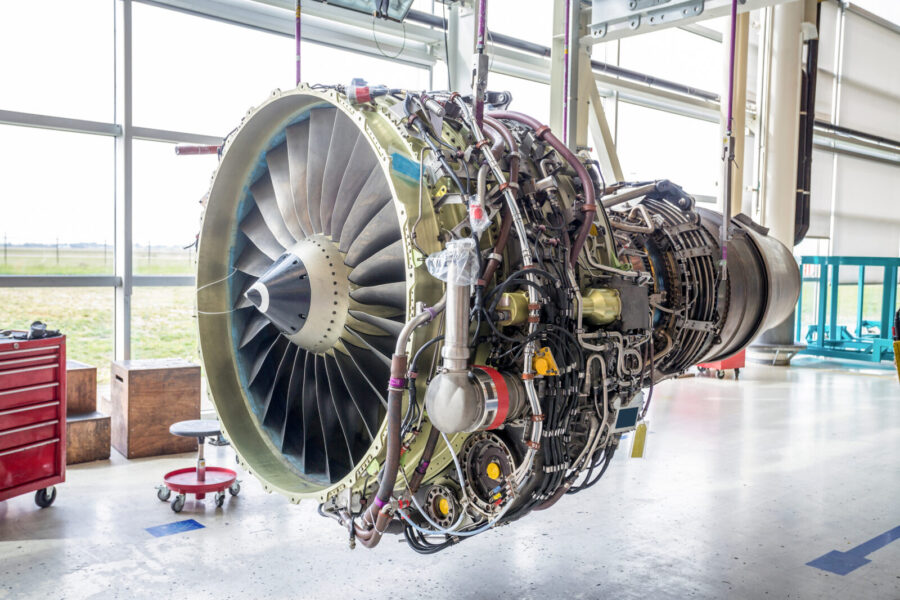

Turbofan engines are the most fuel-efficient jet turbine engines in production. They operate by allowing some of the airflows through the fan to pass around the jet components to the rear of the engine without burning inside the combustion chamber in a process known as “bypass.” The bypass ratio of a turbofan engine is the ratio of the bypass air to the amount of air going into the engine components.
Consequently, turbofans are classified into two main types:
5.1 Low-bypass turbofan engine
Low-bypass turbofan engines use more jet thrust relative to fan (bypass) thrust resulting in a high thrust-to-weight ratio. Low-bypass engines can achieve supersonic speeds when fitted with afterburners, and they are typically found on fighter jets and other military aircraft.
5.2 High-bypass turbofan engine
High-bypass engines, on the other hand, offer more fan thrust relative to jet thrust, and they have a quieter operation than low-bypass turbofan engines. High-bypass turbofans are fuel efficient at subsonic cruising speeds of 500-500 mph (800-885 kph), thus their widespread use on commercial airliners.




















